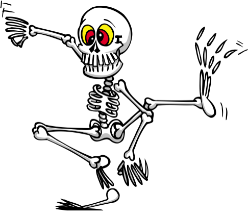Knee Arthroscopy Frequently Asked Questions
What is Arthroscopy?
Arthroscopy or a “knee scope” is one of the most commonly performed procedures done by orthopaedic surgeons. It is a form of minimally invasive surgery or “keyhole” surgery whereby the entire procedure is done through 3 tiny stab wounds around the patella. It is a day surgery, meaning you are in hospital and go home the same day. It is still a true surgery however and is done in the operating room under anesthesia.
Why is Arthroscopy done?
Arthroscopy is done for many different reasons. Just because you know somebody who had a “scope” does not necessarily mean you can compare your results. The indications for arthroscopy may not be the same, therefore your results may not be the same either.
Do I need an anesthetic?
Yes. Either a general anesthetic (put right to sleep) or a spinal anesthetic (needle in the back and frozen from the waist down). Local anesthetic (freezing just in the knee) does not work very well. About half of knee scopes are general and half are spinal. The surgeon does not care which but sometimes the anesthetist for medical reasons may prefer to do a spinal. Sometimes it is necessary for the surgeon to refer the patient to an anesthetist for a consultation prior to surgery.
Spinals allow the patient to be awake and possibly even watch the surgery on T.V. It is safer for some medical conditions and there is less nausea. It takes longer however to recover from the surgery and go home, and there is a certain incidence of headaches.
General anesthesia does not allow the patient to have any recollection whatsoever of the surgery and they can recover quickly and go home faster. There is more chance of nausea, vomiting and coughing however.
What are the risks of arthroscopy?
Arthroscopy in the past has been described as risk free surgery. This is not exactly true. It is minimally invasive surgery with minimal risk. Compared to other surgeries the risk is small (about 1 in 10) but it is a true surgery however and the standard risks of surgery apply. Some examples are:
1. Infection (1 in 500)
2. Blood clot in leg traveling to lungs (DVT with embolus) (1 in 200)
3. Injury in nerves or blood vessels (1 in 7000)
4. Bleeding and ongoing swelling (1 in 20)
5. Anesthetic complications including death (1 in 10 000)
6. Chance of actually making the knee worse (1 in 100)
7. Chance on not finding what is suspected and not being able to fix anything (1 in 10)
Although the risk of surgery is small, risks do exist. The only way one can be guaranteed of not having a complication from surgery is to not have surgery. In that case obviously the knee problem will likely continue unaffected. These risks must be reviewed with patients preoperatively by law. They are not intended to frighten people. It should be kept in perspective that the overwhelming majority of patients benefit from “scoping” the knee.
Do I need physiotherapy after surgery?
Probably not. The physiotherapists actually requested not to have patients referred in the immediate post-operative period. Instead they have prepared a set of exercises to be performed at home after the surgery. This is essentially all they do with patients themselves. For 90% of patients this approach is entirely adequate. If you are not responding (10%) by your follow-up appointment (3 weeks post-surgery) we may elect to place you in formal physiotherapy at that time.
What are my alternatives?
For most conditions potentially requiring knee scopes there are basically 3 options. Each option has its own pros and cons.
1. Conservative Approach (“do nothing” or observation): If the symptoms are not too bothersome for you, there is no indication for surgery. Most people are quite symptomatic by the time they meet the surgeon though.
2. MRI Scan: An MRI scan is a good test that takes a picture of the soft tissues of the knee. It must be done in a larger centre like Orillia or Barrie. It does not involve any risk (no surgery, no radiation, and no extended time off work). It will tell us with reasonable accuracy (85-90%) what is going on with the knee. It is not perfect though and there is still a 10-15% chance the test is wrong.
You can expect to wait 1-4 months for an OHIP funded test.
Lastly, the MRI is strictly a diagnostic test. In other words it doesn’t actually do anything about the conditions, it diagnoses. To treat the problem would require a knee scope.
3. Knee Scope: This involves surgery and hence some risk and probable time off work. However it can be done quickly (usually within one month), it is the best way to visualize the knee (i.e.: its never wrong) and if a problem is found an attempt to treat the knee can usually be made right there on the spot.
How long will I be “laid up” for?
It depends on what we find and what you want to get back to doing.
As a rule, patients require crutches for a few days then can hobble around pretty well on their own. Patients can get back to desk jobs within a week. For sports or heavier type jobs 3-4 weeks is required. When arthritis or lateral cartilage tears are involved recovery can extend to 4-6 weeks.
It should be noted that these are average responses to give a general idea. There is a wide variation among patients around this average figure. It is hard to predict where an individual patient fits in compared to the average.


